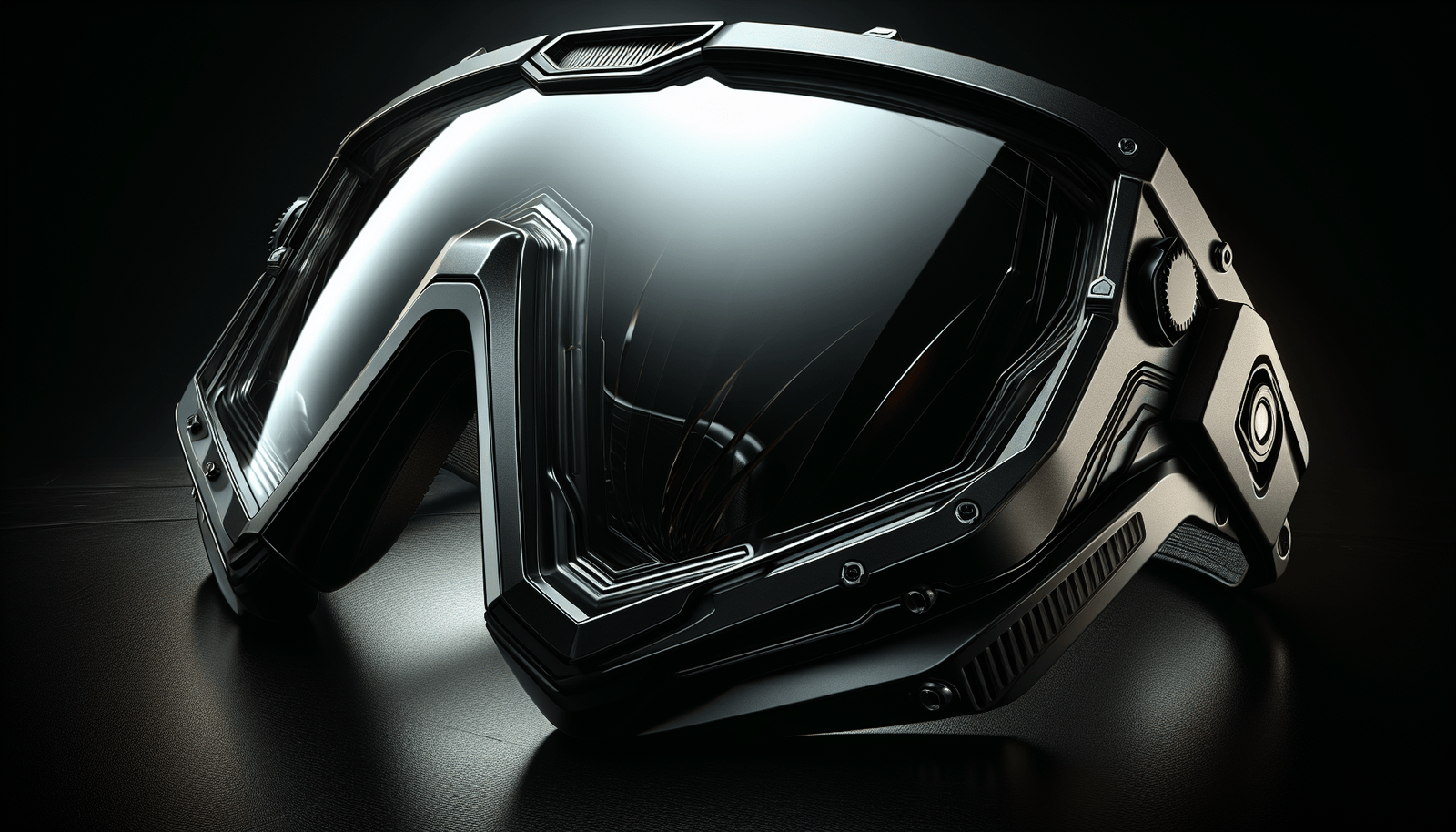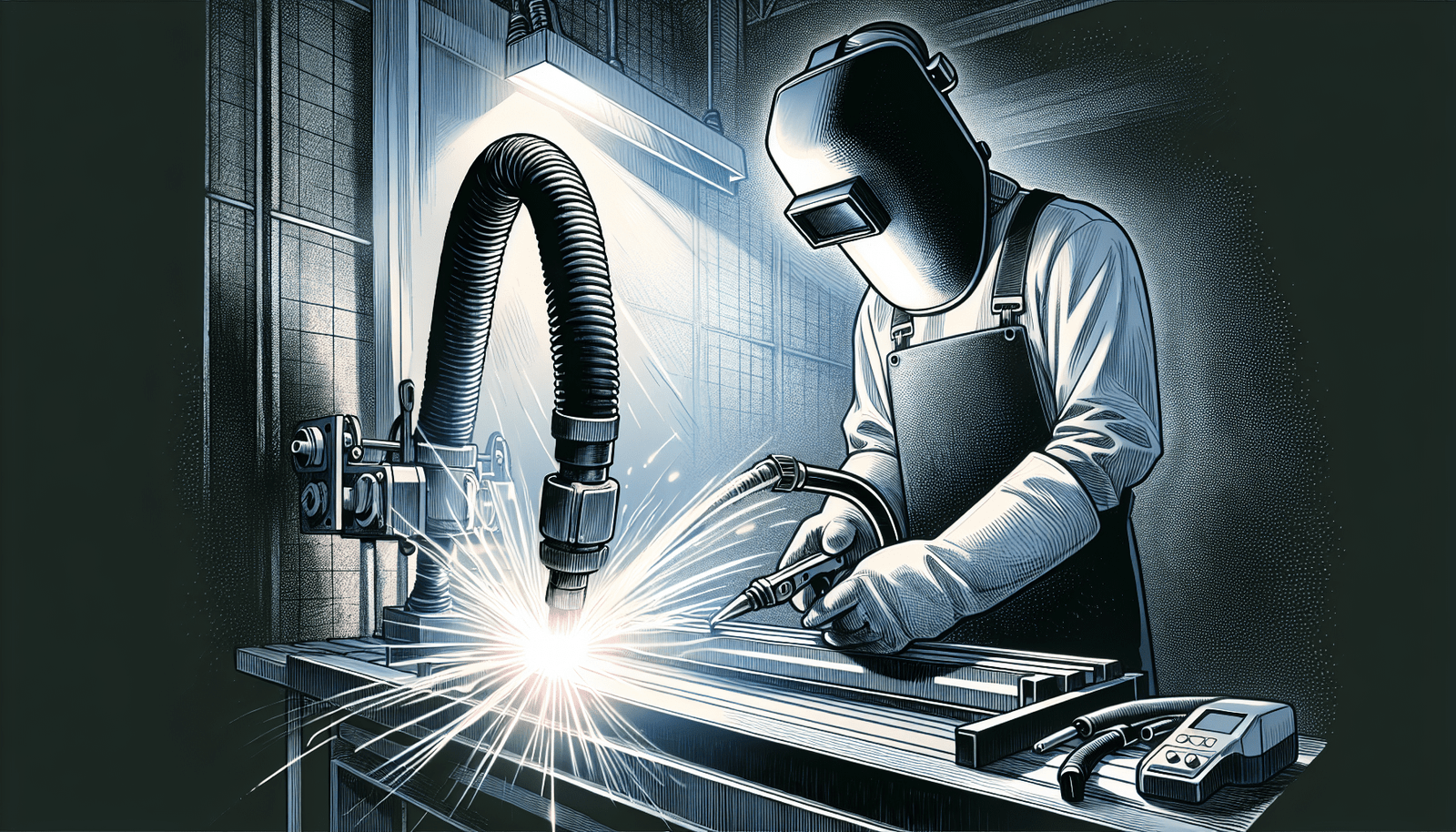When it comes to protecting your eyes during welding, having the right safety glasses is crucial. But with so many options available, it can be overwhelming to know what to look for. That’s where this buyer’s guide comes in. Whether you’re a seasoned welder or just starting out, this article will provide you with valuable information on what to consider when purchasing welding safety glasses. From lens shade numbers to lens material and frame design, we’ll guide you through the important factors to keep in mind, ensuring that you make an informed decision to safeguard your vision.
Guide For Welding Safety Glasses
Understanding the Importance of Welding Safety Glasses
Welding is an essential process in various industries, but it also poses risks to your eyes. That’s where welding safety glasses come in. These glasses play a vital role in protecting your eyes from potential hazards and ensuring your safety while working. Understanding the importance of welding safety glasses will help you make an informed decision about which ones to choose for your welding needs and how they can prevent eye injuries and long-term health effects.
The role of safety glasses in protecting your eyes while welding
When you are engaged in welding, your eyes are exposed to various dangers. Welding arcs emit intense light and heat, which can cause severe damage to your eyes if they are not properly protected. Safety glasses act as a barrier between your eyes and these hazards, shielding them from harmful radiation, sparks, molten metal, and other debris. By wearing safety glasses, you significantly reduce the risk of eye injuries and ensure the safety of your vision.
Common eye injuries that can occur during welding without adequate protection
The risks associated with welding without adequate eye protection should not be taken lightly. Without safety glasses, your eyes are susceptible to a range of injuries such as burns, corneal flash burns, foreign bodies, and even permanent vision impairment. The intense ultraviolet (UV) and infrared (IR) radiation emitted during welding can cause photokeratitis, which is like a severe sunburn on your corneas. Furthermore, the sparks, slag, and flying debris can easily enter your eyes and cause painful injuries, which may require medical attention. Protecting your eyes with safety glasses is essential to avoid these common eye injuries.
How quality safety glasses can prevent hazardous health effects in the long term
Eye injuries during welding not only pose immediate risks but can also have long-term health effects. Prolonged exposure to intense light and radiation can lead to serious conditions like cataracts, macular degeneration, and even blindness. By investing in high-quality welding safety glasses, you can effectively prevent these hazardous health effects. Quality safety glasses are designed to provide optimal protection against UV and IR radiation, ensuring the safety of your eyes both in the short and long term.
Types of Welding Safety Glasses
When it comes to welding safety glasses, there are various options available to choose from. Understanding the differences and uses of different types can help you select the most suitable pair for your welding requirements.
Differences and uses of shaded, mirrored, and clear lens glasses
Shaded lens glasses are specifically designed to protect your eyes from the intense brightness of welding arcs. They come in different shade numbers, ranging from 1.5 to 14, with higher shade numbers providing greater protection. Mirrored glasses, on the other hand, have a reflective coating that reduces glare and offers additional protection against radiant heat. Clear lens glasses are suitable for tasks where UV and IR radiation are not a concern, such as grinding or inspecting welds. Depending on the type of welding you do and the level of protection needed, you can choose between shaded, mirrored, or clear lens glasses.
Flip-up glasses: advantages and circumstances of use
Flip-up welding safety glasses are another option to consider, especially if you frequently switch between welding and non-welding tasks. These glasses feature a convenient flip-up mechanism that allows you to easily switch between shaded lenses for welding and clear lenses for non-welding activities. They offer the versatility of providing optimum eye protection when required and clear vision when not welding. Flip-up glasses are particularly useful for welders who are regularly engaged in different tasks throughout their workday.
Auto-darkening glasses: how they work and advantages
Auto-darkening welding safety glasses are a revolutionary advancement in eye protection technology. These glasses feature lenses that automatically darken in response to the bright light emitted during welding. They utilize sensors to detect the arc and adjust the darkness level of the lens accordingly, providing instant and precise eye protection. Auto-darkening glasses offer several advantages, including enhanced comfort, improved visibility, and increased productivity. They eliminate the need for constant lens changes or flipping, allowing you to focus solely on your welding work.
Lens Shade Number
The lens shade number refers to the darkness level of the welding safety glasses and is crucial in determining the level of protection they provide.
Understanding lens shade numbers
Lens shade numbers typically range from 1.5 to 14, with lower numbers indicating lighter lenses and higher numbers indicating darker lenses. The shade number denotes the level of protection against the intense brightness of welding arcs. The higher the shade number, the more protection it provides against UV and IR radiation. It is important to select the right shade number based on the specific welding process you are engaged in and the intensity of the light emitted during that process.
How to choose the right shade number for your welding requirements
Choosing the right shade number for your welding requirements depends on several factors. The welding process, the amperage or energy level used, the type of metals being welded, and the specific welding environment all play a role in determining the appropriate shade number. For most welding processes, a shade number between 10 and 13 is recommended. However, specialized applications, such as high-amperage welding, may require a higher shade number. Consulting safety standards and seeking guidance from experts can help you choose the right shade number for your specific welding needs.
Impact of wrong shade number on work quality and vision
Using welding safety glasses with the wrong shade number can have serious consequences. If the lens shade is too dark, it can make it difficult for you to see the welding arc clearly, leading to poor work quality and potential mistakes. On the other hand, if the shade number is too light, it may not provide sufficient protection against the intense light and radiation, putting your eyes at risk. It is essential to use safety glasses with the appropriate shade number to ensure both the quality of your work and the safety of your vision.
Material and Build Quality
The material and build quality of welding safety glasses are important considerations for long-term durability and maximum eye protection.
Benefits of polycarbonate lenses and frames
Polycarbonate is a highly durable and impact-resistant material commonly used in the manufacturing of safety glasses. Polycarbonate lenses provide excellent protection against flying debris, sparks, and other potential hazards encountered during welding. They are also lightweight, making them comfortable to wear for extended periods. Additionally, polycarbonate frames offer flexibility and durability, ensuring that the glasses can withstand the demands of the welding environment.
Weight and durability considerations for prolonged use
Welding is often a time-consuming task that requires prolonged use of safety glasses. Therefore, it is crucial to consider the weight and durability of the glasses to ensure maximum comfort and longevity. Heavy glasses can cause discomfort and strain, which can adversely affect your work efficiency. Look for lightweight options that do not compromise on protection. Furthermore, durability is essential as welding environments can be harsh, with exposure to heat, sparks, and other potential hazards. Investing in safety glasses with a sturdy build will ensure that they can withstand the demands of your work for an extended period.
Comparing metal frame glasses versus plastic frame glasses
When choosing welding safety glasses, you will come across options with metal frames and others with plastic frames. Metal frame glasses offer durability and a robust appearance, making them suitable for more demanding welding environments. They are resistant to impacts and can withstand exposure to heat without warping or melting. On the other hand, plastic frame glasses are lightweight and often more affordable. They provide flexibility and comfort, making them suitable for less intense welding tasks or for welders who prioritize comfort over ruggedness. Ultimately, the choice between metal and plastic frames depends on your specific welding needs and preferences.
Comfort and Fit
Comfort and fit play a significant role in the overall effectiveness and usability of welding safety glasses.
The significance of adjustable nose pads and temple arms
Adjustable nose pads and temple arms are key features that contribute to the comfort and fit of welding safety glasses. Nose pads that can be adjusted ensure that the glasses fit securely on your face without causing discomfort or leaving gaps. Temple arms that are adjustable allow you to customize the fit behind your ears, ensuring a snug and stable fit. These features enable you to wear the glasses for extended periods without experiencing discomfort or constantly readjusting them.
Impacts of heavy glasses on comfort and work efficiency
As mentioned earlier, heavy glasses can cause discomfort and strain during prolonged use. They can put pressure on your nose and ears, leading to headaches and reduced work efficiency. Heavy glasses may also limit your range of motion and make it challenging to work in tight spaces. It is important to choose lightweight safety glasses that provide adequate protection without compromising on comfort. Lighter glasses will allow you to focus on your work without unnecessary distractions or fatigue.
The importance of the right fit for maximum protection
A proper fit is crucial to ensure maximum protection for your eyes. Ill-fitting safety glasses may leave gaps around your eyes, allowing debris and radiation to enter. This not only compromises your safety but also reduces the effectiveness of the glasses. Safety glasses that fit securely on your face without gaps will provide a barrier against potential hazards and ensure that your eyes are fully protected. When selecting welding safety glasses, pay attention to the sizing and adjustability features to achieve the right fit for maximum protection.
Anti-fog and Anti-scratch properties
Welding environments can be hot and humid, leading to potential fogging of safety glasses. Additionally, sparks, debris, and other particles can cause scratches on the lens surface. Anti-fog and anti-scratch properties are valuable features to consider when choosing welding safety glasses.
Benefits of anti-fog features in different welding environments
Anti-fog features, such as coatings or vents, help prevent the lenses from fogging up during welding. When the lenses fog, your visibility is compromised, and your work efficiency may be affected. Anti-fog coatings effectively minimize moisture buildup on the lens surface, ensuring clear vision throughout your work. In hot and humid welding environments, where fogging is more likely to occur, anti-fog features can significantly enhance safety and productivity.
The role of anti-scratch lenses in maintaining clear vision
Welding processes involve various particles and debris that can easily scratch the lens surface. Scratched lenses not only impair your vision but also compromise the effectiveness of the safety glasses. Anti-scratch lenses are designed to withstand the rigors of the welding environment, ensuring that your vision remains clear and protected. By investing in safety glasses with anti-scratch properties, you can enjoy long-lasting clarity and reliability.
Comparing glasses with and without these properties
Choosing welding safety glasses with anti-fog and anti-scratch properties provides distinct advantages over glasses without these features. Glasses without anti-fog capabilities can fog up, obstructing your vision and affecting your work efficiency. Similarly, glasses without anti-scratch lenses are more prone to damage, reducing their lifespan and compromising your vision. Safety glasses with these properties offer enhanced visibility, extended durability, and overall better performance, making them a worthwhile investment.
UV and IR protection for Welding
Ultraviolet (UV) and infrared (IR) radiation are significant hazards in welding, and protecting your eyes from these types of radiation is critical for your safety.
Understanding UV and IR emissions in welding
Welding processes emit both UV and IR radiation. UV radiation is primarily produced by the welding arc and can cause various eye conditions, including photokeratitis (welding flash) and long-term damage. IR radiation, on the other hand, is predominantly generated by the heat produced during welding. Prolonged exposure to IR radiation can lead to thermal burns, inflammation, and other thermal-related eye injuries. To ensure comprehensive eye protection, it is essential to choose welding safety glasses that offer effective UV and IR protection.
Risks associated with UV and IR exposure in welding
Exposure to UV and IR radiation during welding poses significant risks to your eyes. UV radiation can cause a painful condition called photokeratitis, which is essentially a severe sunburn on your corneas. Symptoms include redness, swelling, pain, and sometimes temporary vision loss. Prolonged or repeated exposure to UV radiation can also lead to cataracts and other long-term eye conditions. IR radiation can cause thermal burns, resulting in inflammation, pain, and potential damage to the eye structures. Protecting your eyes from UV and IR exposure is crucial to prevent these risks and ensure your eye health.
How glasses with UV and IR protection enhance safety
Safety glasses with UV and IR protection filters are specifically designed to block these harmful radiations. These glasses feature lenses that have special coatings or materials capable of absorbing or reflecting UV and IR radiation, reducing its impact on your eyes. By wearing safety glasses with effective UV and IR protection, you can significantly minimize the risks associated with welding-related radiation and ensure your safety throughout your welding tasks.
Standards and Certifications
When purchasing welding safety glasses, it is important to look for recognized safety certifications that ensure their quality and adherence to safety standards.
Recognize safety certifications for welding glasses
The most commonly recognized safety certification for welding glasses in the United States is the ANSI Z87.1 certification. This certification ensures that the glasses meet the specified requirements for impact resistance and optical quality. Another essential certification to look for is the CSA certification, which indicates compliance with Canadian safety standards. Additionally, other certifications, such as CE markings, may be relevant depending on your specific region and industry requirements.
Implications of ANSI and other standards on safety glasses
Safety standards, such as ANSI Z87.1, are established to ensure the quality and effectiveness of safety glasses. Compliance with these standards guarantees that the glasses provide adequate impact resistance, optical clarity, and protection against various hazards. Non-compliant or poorly manufactured safety glasses may fail to provide the necessary protection, jeopardizing your safety. Always look for safety glasses that meet recognized standards, as they have been tested and proven to meet the required protective standards.
How to verify and interpret certifications on safety glasses
Verifying and interpreting certifications on safety glasses is a crucial step in ensuring their quality and adherence to safety standards. When examining a pair of safety glasses, look for visible markings or labels indicating the relevant certifications. Check for ANSI Z87.1 certification, CSA certification, or any other applicable certifications based on your region. Additionally, you can research the specific requirements and standards associated with these certifications to better understand the level of protection and quality provided by the glasses.
Pricing and Value
When considering welding safety glasses, understanding pricing and assessing value is important to make an informed purchasing decision.
Comparing pricing between different brands and types of glasses
The pricing of welding safety glasses can vary significantly based on factors such as brand, features, and overall quality. High-end brands or glasses with advanced features like auto-darkening lenses tend to be more expensive than basic models. Similarly, branded safety glasses may have a higher price tag due to their reputation for quality and durability. Comparing pricing across different brands and types of glasses will help you find the best balance between affordability and performance.
How to assess value based on features and quality
Assessing the value of welding safety glasses should go beyond the price tag. Consider the features that the glasses offer and how they align with your specific welding requirements. Features such as UV and IR protection, lens shade options, anti-fog and anti-scratch properties, and build quality should all be taken into account. A pair of safety glasses that provide superior protection, comfort, and durability may be worth a slightly higher investment compared to a more affordable option that lacks these essential features. Evaluating the overall value ensures that you choose safety glasses that offer the best performance and long-term satisfaction.
Pros and cons of spending more for premium safety glasses
Investing in premium safety glasses may require a higher upfront cost, but it often comes with several advantages. Premium safety glasses are typically made from high-quality materials, offering enhanced protection, durability, and comfort. They often incorporate advanced features that improve work efficiency, such as auto-darkening lenses or anti-fog coatings. Furthermore, premium safety glasses are more likely to meet recognized safety standards, ensuring their reliability and effectiveness. Ultimately, the decision to spend more on premium safety glasses depends on your welding needs, budget, and preference for long-term value and performance.
Maintenance and Care for Safety Glasses
Proper maintenance and care are essential for ensuring the longevity and effectiveness of your welding safety glasses.
General tips for maintaining welding safety glasses
To maintain your welding safety glasses, follow these general tips:
- Clean the lenses regularly with a soft, lint-free cloth and mild soap or lens cleaning solution.
- Avoid using abrasive materials or cleaning agents that can damage the lens or coatings.
- Store the glasses in a clean, dry case when not in use to protect them from dust and scratches.
- Inspect the glasses frequently for any signs of damage or wear and replace them if necessary.
- Follow the manufacturer’s instructions for cleaning and maintenance to ensure optimal performance.
What to do when lenses get scratched or frames get damaged
If your welding safety glasses’ lenses get scratched or frames get damaged, it is crucial to address these issues promptly:
- Minor scratches on the lens surface can often be mitigated with specialized lens cleaners or repair kits. Follow the manufacturer’s instructions for repairing minor scratches.
- If the scratches are severe or obstructing your vision, it may be necessary to replace the lenses. Consult the manufacturer or an eyewear professional to obtain the correct replacement lenses.
- In the case of significant frame damage, such as broken or warped frames, it is advisable to replace the entire pair of safety glasses for optimal protection. Damaged frames can compromise the fit and effectiveness of the glasses.
Replacing lenses: when and how to do it properly
Replacing the lenses of your welding safety glasses is sometimes necessary. Here are some guidelines for when and how to do it:
- If the lenses are scratched beyond repair or if they no longer provide adequate protection due to damage, it is time to replace them. Signs of major scratches, cracks, or loss of clarity indicate the need for replacement.
- Contact the manufacturer or an authorized dealer to obtain the correct replacement lenses for your specific safety glasses model.
- Follow the manufacturer’s instructions for safely removing the old lenses and installing the new ones. Pay attention to any specific recommendations or precautions provided to ensure proper installation and alignment.
- Once the lenses are replaced, inspect the glasses to ensure that they fit securely and provide the necessary protection. Make any necessary adjustments to the fit before using the glasses.
By following proper maintenance and care procedures, you can extend the lifespan of your welding safety glasses and ensure that they consistently provide the necessary protection for your eyes.




